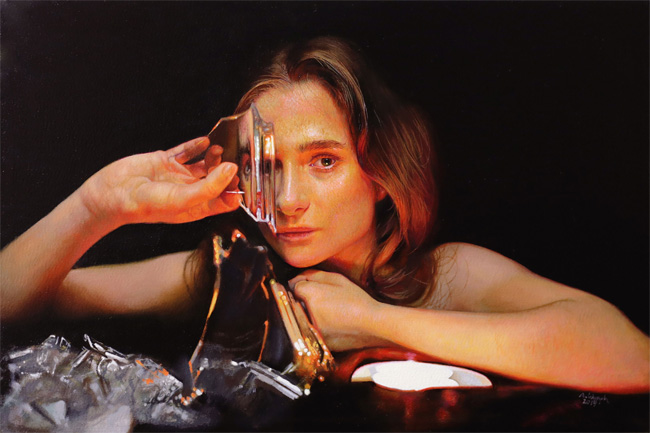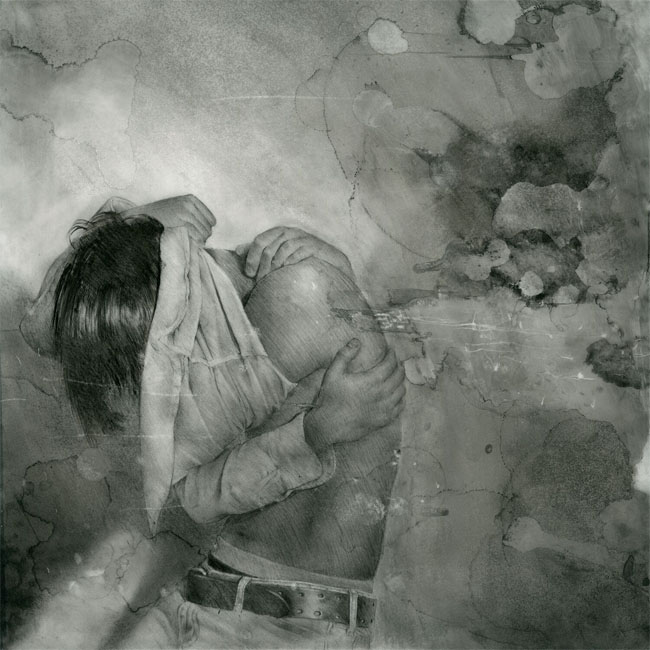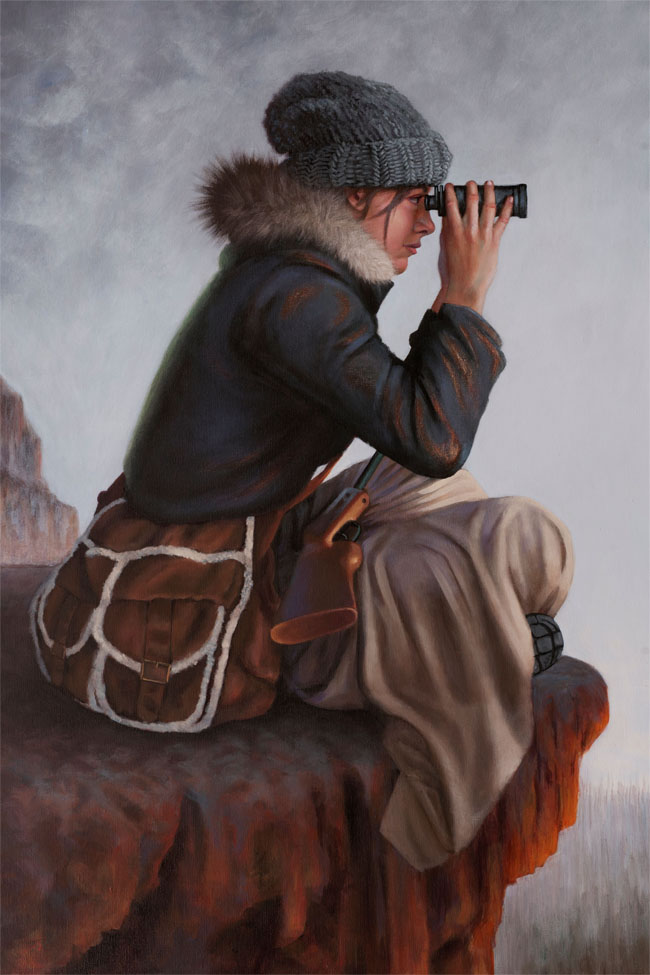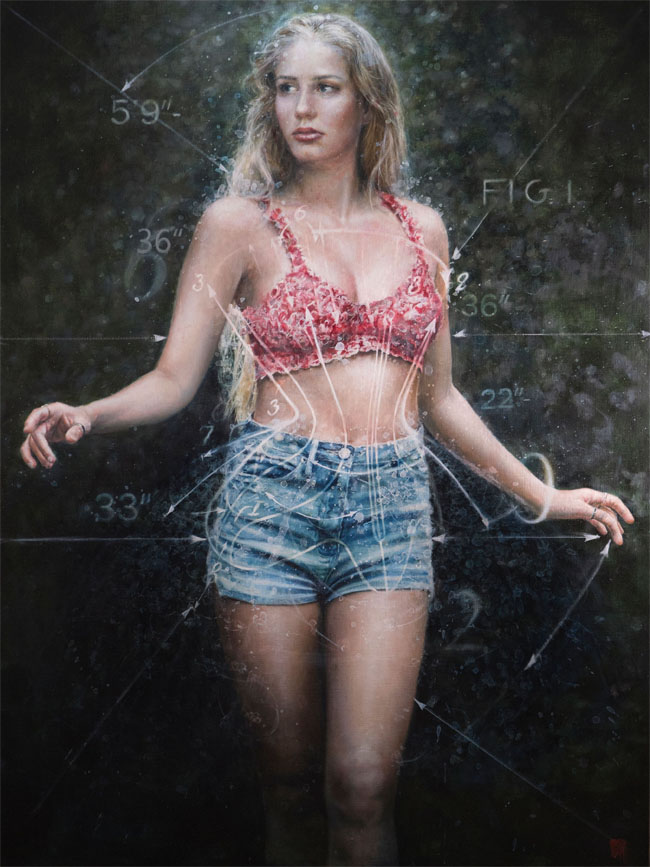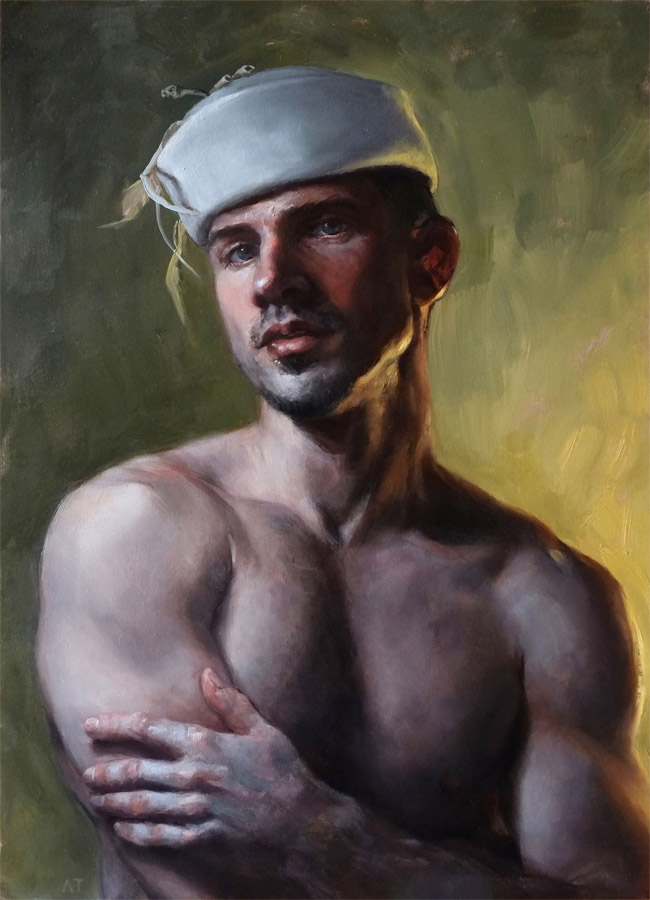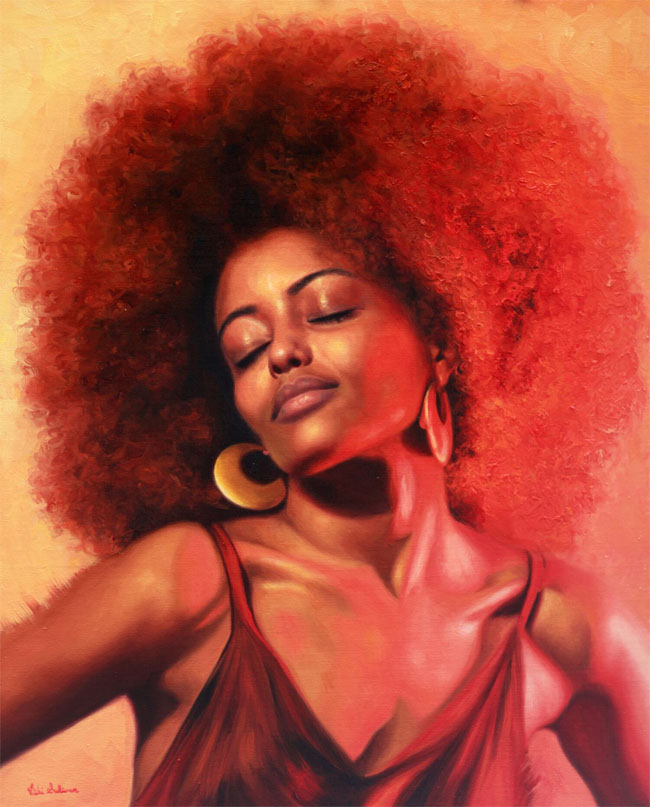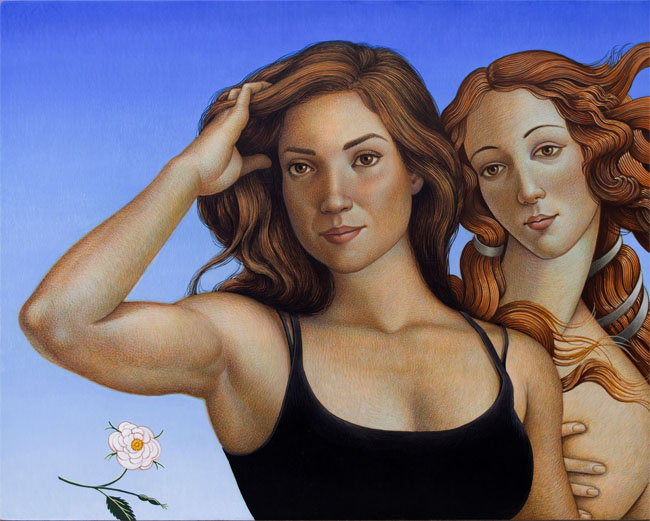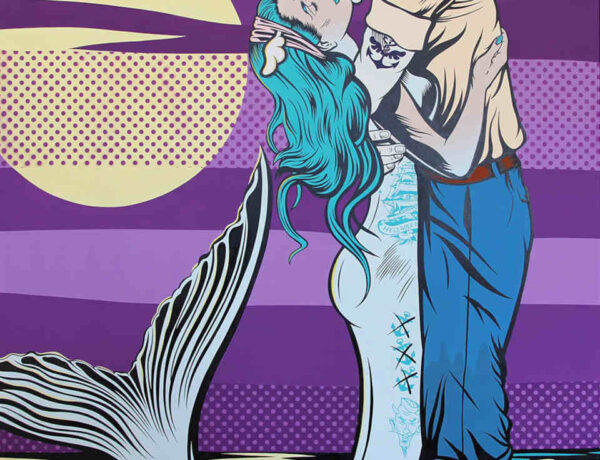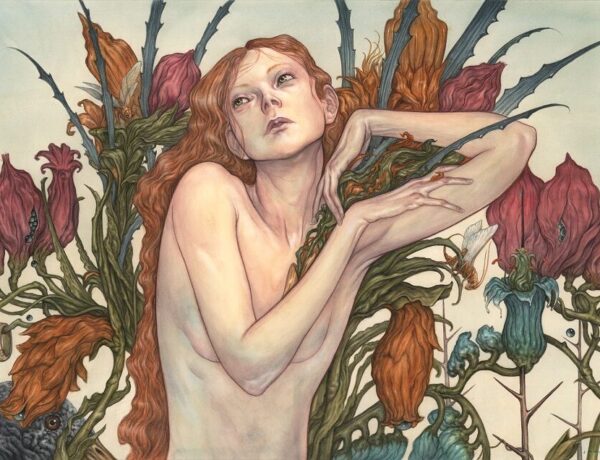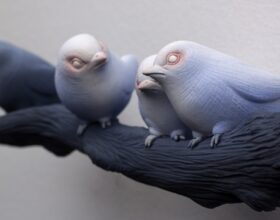I Observe is the new PoetsArtists exhibition opening March 9, at the long established and prestigious Rehs Gallery in New York. I spoke with Lance Rehs, current Vice President of Rehs and curator of I Observe and with Vicki Sullivan and Alessandro Tomassetti, two of the artists participating in the show. Their responses give valuable insight into the exhibition and their roles and viewpoints as curator and artists.
I OBSERVE
Curated by Lance Rehs
Opening Reception:
March 9, 2019 | 1 pm
Exhibition Dates:
March 9-March 29, 2019
5 East 57th Street, 8th Floor
New York, NY 10022
Phone (212) 355-5710
Participating Artists
Alessandro Tomassetti, Alexandra Manukyan, Anna Wypych, Arina Gordienko, Barbara Hack, Catherine Creane, Christina Ramos, Daire Lynch, Dana Hawk, Daniela Werneck, Donna Bates, Ethan Price, Joanna Barnum, June Stratton, Mark Scheff, Michael Bergt, Rachel Linnemeir, Robin Damore, Stephanie Rew, Tanja Gant, Valentine Aprile, Vicki Sullivan, Victoria Herrera.
Rehs Galleries started life in the late 1930s with M. Edwin Schillay, a young accountant, who decided to expand his business in an unexpected way. When one of his clients, an antique dealer based in Greenwich Village, suggested that he consider the art and antiques trade as a supplement to his accounting work, Schillay gave it serious thought. With a little guidance from his client, he traveled to London to investigate the art market and soon began purchasing paintings in bulk. Schillay sold them to a variety of department stores that then featured the paintings in their art galleries.
Throughout the 1940s, Schillay maintained his art business as an adjunct to his accounting firm and continued to expand his network of contacts in the London art world as well as in the US. He purchased primarily nineteenth century British paintings, pioneering the introduction of Victorian paintings to the American market through his bulk sales to department stores. After the war ended, Schillay gradually expanded his inventory to include artwork from other European countries.
In the mid-1950s, Schillay’s wife, Ruth, decided to take a more active role in the business, and opened a retail outlet at 303 Park Avenue South, redefining the business model to include sales to private individuals, and thus establishing the early roots of the art gallery as an independent enterprise.
The year 1960 marked another turning point. The gallery was importing between 6000–7000 paintings each year, and consistently maintaining an inventory of 2000-2500 paintings on site. With a move to a move to a larger space, Schillay & Rehs emerged as one of the largest importers of eighteenth and nineteenth century European paintings. By the late 1960s, the gallery had a well regarded track record in the art world. It was at this point that Schillay’s son-in-law, Joseph B. Rehs, joined the business. The fourth generation of the family is now involved in running Rehs Contemporary Galleries.
Realist art remains the focus of Rehs Galleries, Inc., but the scope of the business continues to evolve and expand in conjunction with the myriad currents of the art market. The importance of the internet to art galleries became increasingly clear as more and more dealers developed an online presence. Rehs Galleries was no exception. In describing the changes that emerged in his own years at the gallery, Joseph Rehs remarked that “When you hit a wall, you grow into the next phase.”
Anna Wypych – The Fire Reflection
Ethan Price – Paper Tiger
Lance Rehs – Exhibition Curator
Firstly, could you add your personal reflections on being a fourth generation owner of a prestigious NY gallery and how you see it’s focus and direction in the contemporary artworld?
Being the fourth generation at my family’s gallery is a bit of a double edged sword… of recent history, we’re really considered 19th Century painting dealers, so there is quite a bit of pressure to carry on those traditions. At the same time, I’m given a tremendous amount of freedom to push things in a new direction. When we decided to expand the scope of the gallery and begin taking on contemporary artists, we did so through the same lens we use when evaluating the historic works we deal in. That ultimately manifested itself in a roster of artists working in the realm of contemporary realism – it’s a rather narrow genre in the contemporary scene but we feel we’re heavily diversified in our aesthetic as you’ll see landscape, still life, figurative and even some abstract work… we have artists whose work is photorealistic and hyperrealistic; artists who have a more surreal feel to their work; artists who paint looser using a more impressionistic approach; and even a bit of trompe l’oeil … and subjects truly run the gamut from historical/nostalgic compositions to ultra-contemporary/cutting edge imagery. At the end of the day, we’re looking to be a platform for contemporary artists who are carrying on many of the traditions set forth by 19th Century artists… it’s a way to move forward with the contemporary art world, while paying homage to the period of art we know so well… and let’s be real, the kind of artists I’m talking about are far underrepresented in the gallery world today and many of them are so incredibly talented – they just need the opportunity. One of the greatest pleasures of my job is just that – giving someone a chance, especially one who is deserving.
Can you tell us about your relationship with the PoetsArtists and how the exhibition I Observe came about?
My direct relationship with PoetsArtists, truthfully, has been rather informal… Didi and I have been in similar circles for many years now – quite a few of the artists I represent are members of the group but we’ve never had any kind of direct working relationship, that is until now. Didi approached me just after the summer in 2018 to gauge my interest in curating a show at Rehs Contemporary. Being that we work with a number of the artists, I already had an idea of the quality of work to expect, so I was certainly open to the idea. Initially, I didn’t come up with a theme and ask the artists to paint into it… I’ve been doing group shows for a few years now and I’ve noticed most artist’s best work is when they paint what they want. When I give a theme or direction, the final work suffers in some way – I see it all the time with commissioned work… it’s just not the same. So now, I try to avoid that; though it makes these exhibitions feel as though I am going about it sort of backwards.
As the curator, was the concept for the exhibition up to you? If so, could you explain your underpinning ideas for the show?
We started out with an open call to the PoetsArtists group and we received over 100 submissions. I began considering the submitted works and before long a common thread began to emerge – the works seemingly portrayed the subject observing something, and in some cases appearing to observe the viewer themselves. Being that the act of observation is so central to the artistic process, it just felt natural to explore that further and build the concept from there – it was certainly a more organic approach to creating the theme. That said, I think the title, I Observe, is very fitting and serves as a multi-dimensional way of understanding the exhibit. It touches on the artists observations that are communicated through the work, the observation of something by the subject within the work, as well as the observation of the work by the viewer.
What were you looking for in the work of the artists selected for the exhibition?
Quality is probably the biggest factor – we look for artists who are technically excellent and can render their subject the way they intended. It may sound silly to project what the artist intended, but in many cases you can see that whatever the artist was trying to do, just didn’t work. We also obviously consider work that will appeal to our collectors’ tastes – the last thing I want to do is tie up an artist’s work that I cannot sell when there may be other opportunities out there. After that, it is just about fitting into the concept of the exhibit and trying to select works that will make for a cohesive grouping.
What do you hope the audience will take away from the exhibition I Observe?
I hope it will make people a bit more aware; more empathetic. To be more attentive; to pay attention to details. To read the expressions on someone’s face, but also make them consider why that person has that expression on their face. In a time where society seems ever fragmented, I think it is paramount that we strive for common ground; a sense of understanding. And with that, I think it starts with being more in-tune with and conscious of our surroundings; the things we observe.
Christina Ramos – The Lookout
June Stratton – Measure
Alessandro Tamassetti – Participating Artist
Can you explain what drew you to PoetsArtists and what it means to you to be part of this group?
I was seeing artists whom I admired use #poetsartists on their Instagram posts long before I knew what it was. With a little research, I came to realise it was exactly the kind of community I had been looking for since moving to Europe from Los Angeles. I happen to like time alone in my studio but the pursuit of art-making as a career can feel quite lonely at times so it has been wonderful to meet so many artists, even if only virtually, through the group. Being a member of PoetsArtists strikes the right balance between camaraderie and healthy competition that I think keeps an artist evolving while offering helpful resources and a variety of opportunities to have your work seen.
Can you give a little insight into your artistic practice?
Painting is my full time job, albeit one that I can time-shift as I see fit. I’ve worked for corporations (Disney, Sony) in creative capacities and felt the slog of having to work on things that I didn’t believe in so I don’t take for granted how precious it is to be able to create my own work on my own time schedule. I try to put in studio time every day and have several paintings on the go so there is always something ready to work on while other pieces dry. Sometimes my day revolves around cleaning or organising my space and I find this gives me time to view my work from another perspective and think about what my next steps will be.
Did you create specific work for I Observe? How did you interpret the theme? Can you tell us about your particular work for this show?
My painting, Sweet And Tender Hooligan, was completed before I knew about the show but it just fitted so perfectly with the theme I Observe that I had to submit it. Aside from the obvious, that the subject of the painting seems to be actively evaluating the viewer while he himself is being watched, the concept of observation also tied into the backstory of the painting. The model is my childhood next-door neighbour who, being 10 years my junior, I literally observed grow up. We’ve collaborated several times over the years but we hadn’t seen one another for a few years before this particular session. I asked him to shave his long beard to better inhabit the character I had in my mind and because I had the feeling he was hiding behind the facial hair, wanting to appear older and more mature. He agreed to shave and when he returned and sat in front of me I witnessed a metamorphosis, in his face certainly, but also in his posture and most distinctly, in the way he was allowing himself to be seen. This person was vulnerable, open, and more representative of the sensitive person I’d come to know over 20+ years. I tried to capture what I observed during that session, a physical likeness but also an emotional one.
Alessandro Tomassetti – Sweet and Tender Hooligan
Vicki Sullivan – Participating Artist
Vicki Sullivan – Bliss
Can you explain what drew you to PoetsArtists and what it means to you to be part of this group?
For some time, I kept seeing PoetsArtists popping up in my social media. Intrigued, I was drawn to explore some of the opportunities they were creating and sharing. Australians contend with the tyranny of distance. Being so far from everywhere can be somewhat isolating. Didi Menendez is a whirlwind of energy and ideas, and through her and PoetsArtists my artistic life has now been opened up to the broader world; using the internet to participate in global artistic endeavours.
Becoming a part of PoetsArtists has brought me into a supportive community, a tribe really, with an indefatigable leader in Didi. I enjoy the opportunity to hear about upcoming exhibitions, helping each other where we can, and sharing ideas and information. Being part of PoetsArtists has resulted in several of my paintings being selected for international publications and exhibitions; and I am so grateful to be involved.
Can you give a little insight into your artistic practice?
Painting people is my passion and I often accept Portrait Commissions which help earn my bread and butter. Between portrait commissions I work on my own figurative ideas. I usually have several paintings on the go and revolve between them while allowing time to dry as well as time to reflect on which areas need adjusting.
Most days begin the same way for me. I wake up early and paint for 8 hours, stopping only for morning tea and lunch. As a tonal realist painter, I trained in the Meldrum method in Australia and then at the Angel Academy of Art in Florence Italy with Maestro Michael John Angel. Tonal values are a major priority for me, because when the tonal values are correct, the form will have the illusion of being three dimensional. Other important considerations are drawing, edges, color and variation. Being passionate about the process of painting means I am striving to constantly learn and improve my technique.
Did you create specific work for I Observe?
The name for the show, I Observe, was decided upon after the finalists were announced. The call was originally for intimate work and, while Bliss wasn’t created specifically for this exhibition, I feel she conveys a style of intimacy to fit the idea.
How did you interpret the theme?
As painters, especially realist painters, we spend every hour of our life observing. Painting is as much about learning to see as about learning to paint. Understanding how light behaves is paramount to my painting practice, so I guess I interpreted the theme through light, colour and gesture in a very practical way.
Can you tell us about your particular work for this show?
My painting, Bliss, is part of a series of works in which I am exploring inner feelings of positiveness. I strive to paint a person’s inner glow, peace and radiance – observable feelings we have when we feel great in our own skin. I wanted to try and convey this theme in a way my audience could absorb the inner feeling of positiveness. In my hope of hopes I want the viewer to feel the joy emanating from the work.
Michael Bergt – Venus
Victoria Herrera – Symbolism of a Seashell



